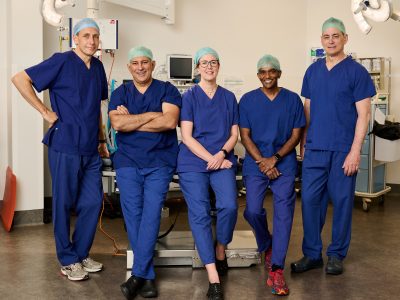All plastic, cosmetic and reconstructive surgical procedures come with risks and potential complications. To ensure successful surgery, it is crucial to understand and minimise these risks. Whilst all measures are taken to mitigate risks, some risks are unavoidable.
All information on this page is general in nature – your Specialist Plastic Surgeon will discuss the specific risks and complications pertinent to your individual surgical procedure during your consultation. General risks for surgery are listed here.
Specific risks related to breast reconstruction surgery include, but are not limited to bleeding, infection, severe scarring, loss of circulation in the flap, loss of feeling in the arm or hand, and drug and anaesthetic reactions varying in severity to (very rarely indeed) the point of death.
Complications that may arise from microsurgical or pedicled own tissue reconstructions, like the TRAM flap, include certain risks. These potential issues include an abdominal hernia (approximately 2%), small areas of hardness known as fat necrosis in the new breast that might require later removal, and the possibility of asymmetry with the other breast. In some cases, a small part of the flap’s edge may have insufficient blood supply and need surgical removal within a couple of weeks after the initial operation.
Your surgeon will provide a more detailed explanation of possible complications, but it’s important to emphasise that severe complications are very uncommon. In microsurgical procedures, the most commonly encountered condition is thrombosis (clots) in the leg veins. While precautions are taken to prevent this, around 5% of patients may experience it nonetheless. In rare instances, these clots may travel to the lungs, which can be serious. If you have a history of leg vein clots or varicose veins, it is essential to inform your surgeon.
Patients undergoing implant reconstructions may encounter complications such as hardening and pain in the reconstructed breast, attributed to capsular contracture, which often requires further surgery. An infected implant might also necessitate additional surgery and typically requires removal to control the infection. Although traumatic ruptures of implants are possible, it usually requires significant force to rupture an implant in good condition. It’s important to recognise that implants gradually deteriorate over time and are not considered lifetime devices, as many patients may need to replace them at least once during their lifetime.
Please note that self-funded (uninsured) private patients should be aware that in the event of complications, significant extra costs may be incurred, particularly in private hospitals.



